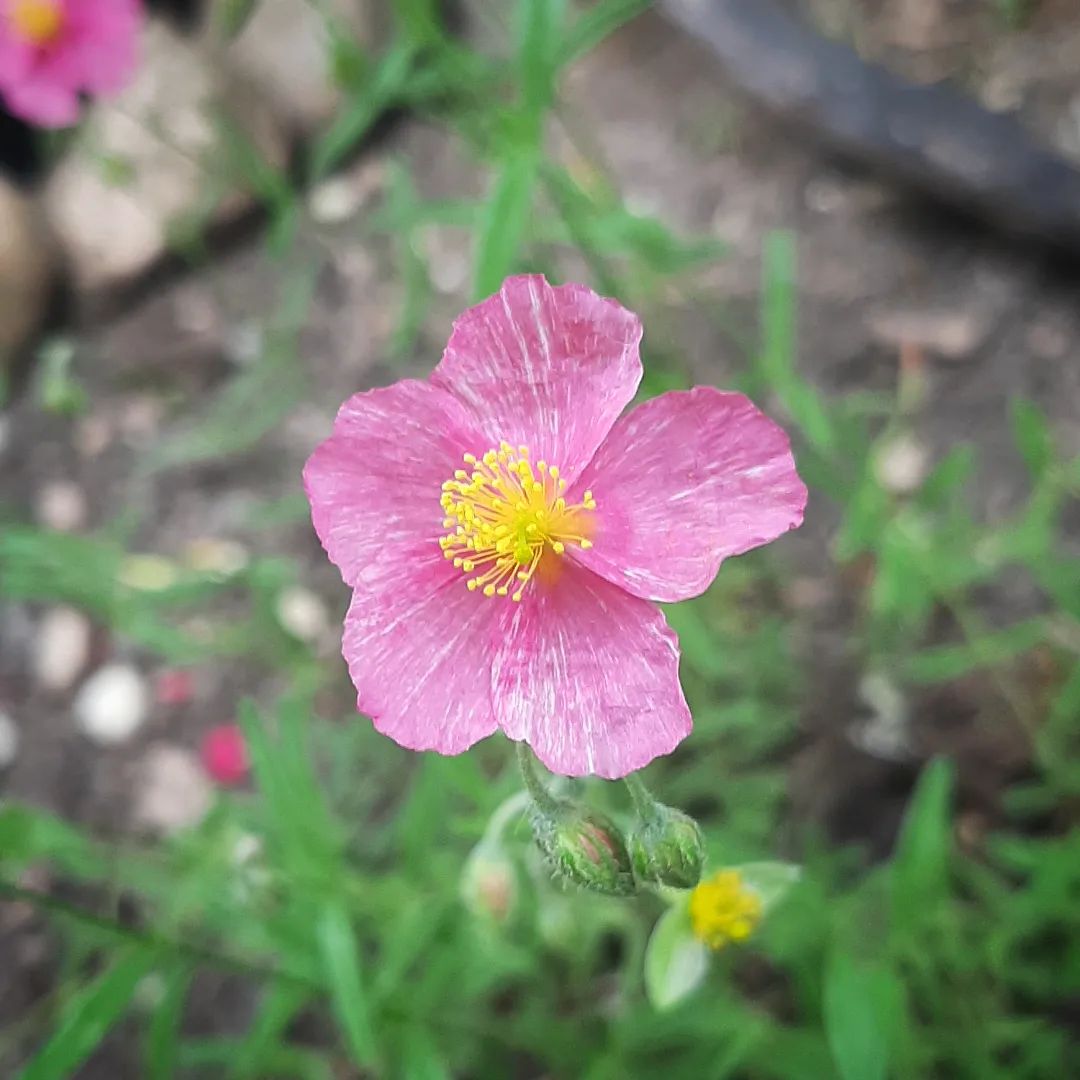Helianthemum Sunrose Growing and Care: Embrace the Radiance of Sun-Kissed Gardens
Imagine a garden ablaze with the vibrant hues of the Helianthemum Sunrose, each delicate bloom basking in the warmth of the sun. Known for their resilience and breathtaking beauty, these sun-loving perennials captivate gardeners worldwide with their cascading flowers that seem to dance in the breeze. Whether you’re a seasoned gardener or just beginning your journey into horticulture, cultivating Helianthemums adds a burst of color and joy to any landscape.
These charming plants, also called Sunroses, thrive in well-drained soil and revel in full sunlight, making them ideal for those seeking low-maintenance yet striking garden additions. From their early spring blossoms that herald the season’s arrival to their enduring charm throughout summer, Helianthemums promise a tapestry of shades from soft pinks to fiery oranges. Join us as we delve into the art of nurturing these botanical gems, uncovering the secrets to ensuring your garden radiates with the allure of Helianthemum Sunroses year after year.

Helianthemum Sunrose Growing and Care
We’ll discuss the topic step by step. So, bear with us, and let’s dive into it:
What are Helianthemum Plants?
Helianthemums, commonly known as Sunroses or Rock Roses, are perennial plants prized for their dazzling display of flowers and drought tolerance. Belonging to the Cistaceae family, these plants are native to the Mediterranean region but have adapted well to various climates worldwide. They typically grow in low, spreading mounds with woody stems and small, elliptical leaves that are often silvery-grey, offering a striking contrast to their vibrant blooms.
These plants are renowned for their profusion of blooms, which appear in spring and summer, depending on the species and location. Each flower, typically around 1 inch in diameter, boasts five delicate petals that can range in color from pure white and soft pink to bright yellow and deep orange-red. This diversity in color makes Helianthemums a versatile choice for gardeners looking to add splashes of color to rock gardens, slopes, or sunny borders.
Helianthemums thrive in well-drained, slightly alkaline soil and require full sun to bloom profusely. They are low-maintenance plants once established, requiring minimal watering once their roots are established in the soil. Pruning after flowering helps maintain their compact shape and encourages new growth, ensuring a continuous display of their vibrant blossoms throughout the growing season.

Growing Sunrose or Helianthemum
Where to Plant Helianthemum
Choosing the right location is crucial for the success of Helianthemum plants. These sun-loving perennials thrive in full sunlight, so select a spot in your garden that receives at least 6-8 hours of direct sun each day. They also prefer well-drained soil that is slightly alkaline. Ideal locations include:
- Sunny borders
- Rock gardens
- Slopes or raised beds where drainage is excellent
When to Plant Helianthemum
The best time to plant Helianthemum is in early spring after the last frost has passed. This allows the plants to establish their roots before the heat of summer. In warmer climates, fall planting can also be successful, giving the plants time to settle in before winter.
Planting and Spacing Helianthemum
When planting Helianthemum, dig a hole that is slightly larger than the root ball of the plant. Place the plant in the hole, ensuring the crown (where the roots meet the stem) is level with the soil surface. Backfill with soil and gently firm around the plant. Space multiple plants 12-18 inches apart to allow for their spreading growth habit.
How to Water and Feed Helianthemum
Initially, water newly planted Helianthemum regularly to help establish roots. Once established, these plants are drought-tolerant and only need watering during prolonged dry spells. Avoid overwatering, as they are susceptible to root rot in waterlogged soil. Feed with a balanced fertilizer in early spring to promote healthy growth and abundant flowering.
Helianthemum Propagation
Helianthemum can be propagated from semi-ripe cuttings taken in summer. Choose healthy, non-flowering shoots and trim just below a leaf node. Remove lower leaves, dip the cut end in rooting hormone, and plant in a well-draining medium. Keep moist and place in a warm, bright location until roots develop. Transplant into individual pots once roots are established, and then into the garden after they’ve hardened off.

Sunrose Care
How to Care for Helianthemum
Helianthemums, also known as Sunroses, thrive in sunny, well-drained locations. To ensure their optimal growth and blooming:
- Sunlight and Soil: Plant in full sun and well-drained, slightly alkaline soil.
- Watering: Water regularly, especially during dry spells, but avoid waterlogged conditions.
- Fertilization: Apply a balanced fertilizer in early spring to promote healthy growth and flowering.
Helianthemum Pests and Diseases
Despite their resilience, Helianthemums are susceptible to a few pests and diseases:
- Aphids: These sap-sucking insects can distort new growth; treat with insecticidal soap or neem oil.
- Powdery Mildew: Fungal disease that appears as white powdery spots on leaves; improve air circulation and consider fungicidal treatments if severe.
- Root Rot: Caused by overwatering or poorly drained soil; ensure good drainage and avoid excessive watering.
Regular monitoring and prompt action can help maintain the health and vigor of Helianthemum plants, ensuring they continue to bloom beautifully season after season.

Commonly Grown Helianthemum Species
Helianthemums, commonly known as Sunroses, encompass several popular species favored for their vibrant blooms and ease of care. Here’s a concise overview of some widely cultivated varieties:
1. Helianthemum nummularium (Common Sunrose)
Helianthemum nummularium is perhaps the most recognized species, known for its profusion of small, saucer-shaped flowers. This species typically blooms in shades ranging from creamy yellows to rich oranges and can spread up to 18 inches wide. Common Sunroses are prized for their ability to thrive in poor, rocky soils, making them ideal for rock gardens and sunny slopes.
2. Helianthemum ‘Wisley Pink’
‘Wisley Pink’ is a cultivated variety renowned for its delicate pink flowers that appear in abundance from late spring through summer. This hybrid Sunrose maintains a compact growth habit, reaching about 12 inches in height and spreading up to 24 inches. Its long flowering period and drought tolerance make it a favorite among gardeners seeking enduring color and minimal maintenance.
3. Helianthemum ‘Henfield Brilliant’
‘Henfield Brilliant’ stands out with its striking deep red flowers, contrasting beautifully against its evergreen foliage. This cultivar blooms profusely from late spring to early summer, attracting pollinators while requiring little water once established. ‘Henfield Brilliant’ is perfect for edging borders or adding a splash of intense color to sunny garden spots.

4. Helianthemum ‘Ben Hope’
‘Ben Hope’ offers sunny yellow flowers with a distinctive red eye, creating a cheerful display from spring to early summer. This compact Sunrose variety grows to about 8 inches tall and spreads up to 12 inches wide. Its drought tolerance and preference for well-drained soil make it an excellent choice for containers or rockeries.
5. Helianthemum ‘The Bride’
‘The Bride’ is celebrated for its pure white flowers that brighten gardens from late spring to midsummer. This low-growing Sunrose reaches heights of around 6 inches and spreads up to 12 inches wide. Its compact size and early flowering make it ideal for front borders, rock gardens, or as a ground cover in sunny locations.

These popular Helianthemum species and cultivars offer a spectrum of colors and growth habits, catering to diverse gardening preferences while providing enduring beauty throughout the growing season.
Frequently Asked Questions
How do I plant Helianthemum Sunrose?
To plant Helianthemum Sunrose, choose a sunny spot with well-drained soil. Dig a hole slightly larger than the root ball, place the plant in, and backfill with soil. Water thoroughly after planting to help establish roots. Mulching around the base can help retain moisture and regulate soil temperature.
When is the best time to prune Helianthemum Sunrose?
The best time to prune Helianthemum Sunrose is after flowering, typically in late spring or early summer. Trim back any dead or overgrown branches to promote new growth and maintain a compact shape. Avoid heavy pruning in late summer or fall, as this can reduce flower production the following season.
How often should I water Helianthemum Sunrose?
Helianthemum Sunrose prefers dry to medium moisture levels once established. Water deeply but infrequently, allowing the soil to dry out slightly between waterings. During periods of intense heat or drought, increase watering frequency. Avoid overwatering, as this can lead to root rot and other issues.
How can I propagate Helianthemum Sunrose?
Helianthemum Sunrose can be propagated through softwood cuttings taken in early summer. Select healthy, non-flowering shoots and cut 4-6 inches long. Remove the lower leaves, dip the cut end in rooting hormone, and plant in a well-draining potting mix. Keep the cuttings moist and in a warm, sunny location until roots develop.
Conclusion
In conclusion, cultivating Helianthemum Sunrose offers gardeners a vibrant and low-maintenance addition to their landscapes. With their stunning, sun-loving blooms and easy-going nature, these perennials thrive in well-drained soil and full sunlight. Whether adorning rock gardens, borders, or containers, Helianthemums reward with a kaleidoscope of colors from spring through summer.
By providing adequate sunlight, moderate watering, and occasional pruning, gardeners can ensure these charming plants continue to brighten gardens year after year. Embrace the beauty and resilience of Helianthemum Sunrose to create a garden that bursts with color and joy throughout the growing season.

I’m Shofi, a passionate gardener and blogger. I have 10+ years of experience in gardening and hold certifications in horticulture and garden design. I share my knowledge and skills through my garden blog to inspire and educate others on the joys of gardening. I try to provide valuable information and create a community for gardeners of all levels to connect and learn. My ultimate goal is to inspire others to start their own gardens and connect with nature.

